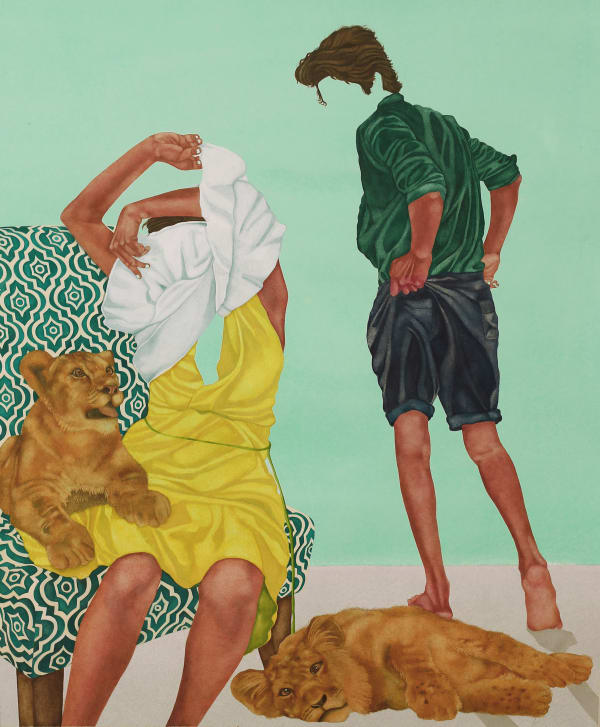-
Rabia Farooqui
Salon Exhibition -

-

-
The painting thus invites viewers to contemplate the fluidity and ambiguity of the in-between states of human existence. It prompts reflection on the interplay between desire and restraint, vulnerability and strength, and the ever-present tension between instinctual impulses and societal constraints. Through this exploration, the painting challenges conventional notions of power, agency, and identity, inviting viewers to consider the complexities of human nature and the multifaceted dynamics of relationships.In the painting "Clap for Me," a narrative of performance unfolds, drawing inspiration from the innocence of bedtime rituals and childhood companionship. As the woman engages with the teddy bear, a symbol of innocence and comfort, the scene takes on layers of complexity. Meanwhile, the male figure's acknowledgment of the narrative suggests a claim to authority and control, subtly shifting the dynamics of the interaction.Similarly, in “Forgive my Lurking”, a symbolic clash between primal instincts and human vulnerability is depicted as a lion confronts a silhouette reminiscent of its own fur texture. Amidst this tension, the vulnerable silhouette seeks recognition while the lion asserts its dominance. Yet, the woman's gravitation towards the vulnerable figure challenges traditional power dynamics, offering a poignant commentary on the complexities of human relationships.
By portraying scenarios where traditional roles and expectations are challenged or subverted, the paintings prompt viewers to reflect on the ever-changing nature of identity. They invite us to question how societal norms and perceptions influence our understanding of ourselves and others, and how these perceptions can shift based on context and interpretation.
-
Enquire
-
Rabia Farooqui: Salon Exhibition
Past viewing_room





